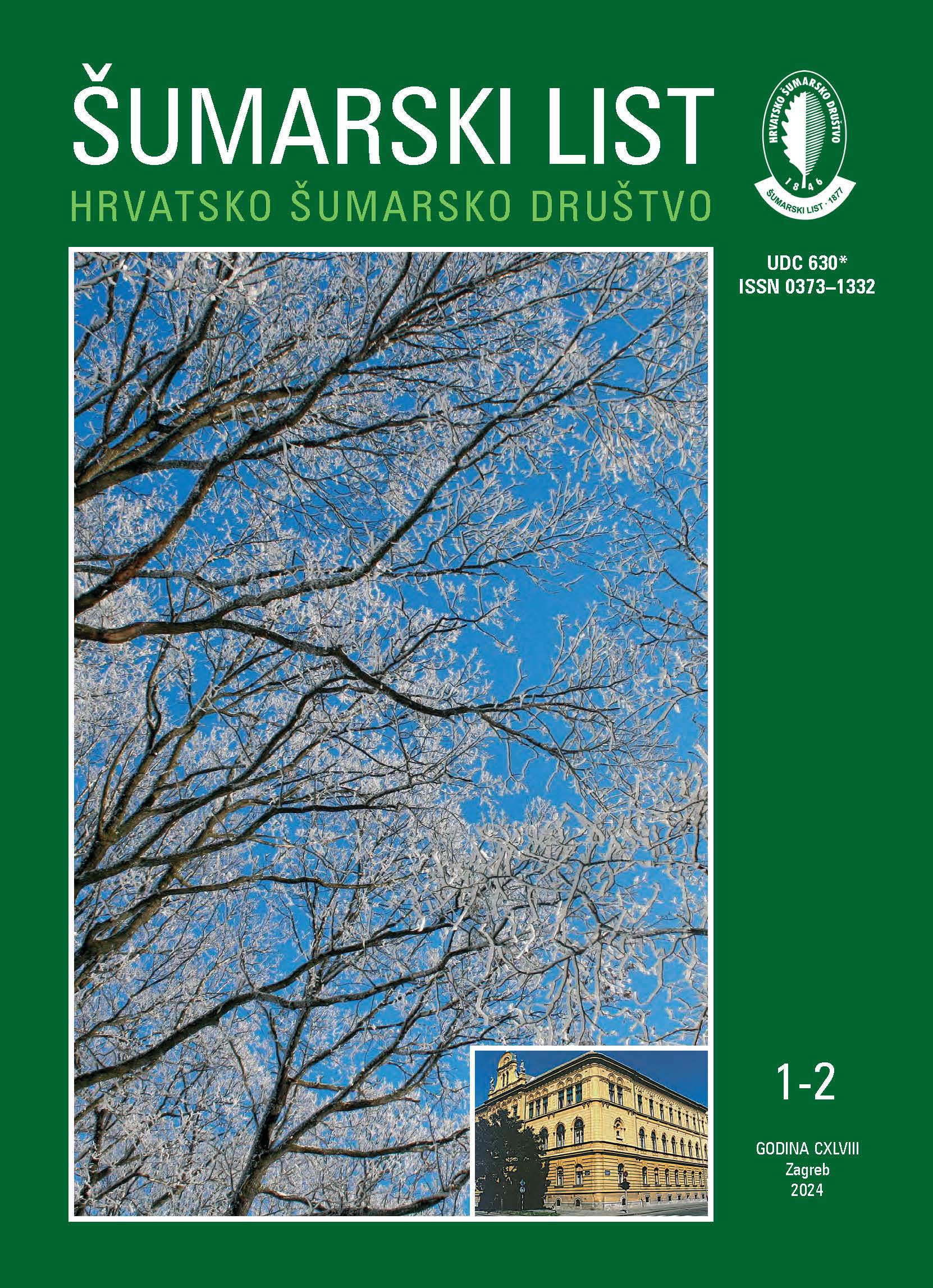Phytosociological research into the Illyrian oak–hornbeam forest on the limestone cliffs of Kupa River canyon (Kamanje, West-Central Croatia)
Keywords:
Epimedio-Carpinetum betuli, Illyrian oak forests, semi-natural forests, Natura 2000 forest, peri-Pannonian biogeographic regionAbstract
In this paper, we present 14 relevés of oak-hornbeam forest from the limestone cliffs of Kupa River canyon in Kamanje, W-Central Croatia. The investigated forest is part of the Natura 2000 ecological network, and it represents one of the rare remnants of climax forest in the area that is not highly influenced by anthropogenic management. Plant community composition was recorded using the six-degree Braun-Blanquet scale, and its relation to similar forests studied by other authors was assessed using agglomerative hierarchical clustering. Because of the abundance of limestone rocks and consequently microhabitats, the forest is very species-rich, with a total of 164 vascular species recorded, ranging from 42 to 80 species per relevé. The Kamanje forest belongs to the association Epimedio-Carpinetum betuli, with regard to traditional classification to the subassociation staphyletosum, and is rich in species of the Illyrian-Balkan floral geoelement. However, compared to the forests of the same association from other areas, this forest has some distinct floristic features. Among the trees, Quercus petraea is replaced by Q. robur. The herb layer is abundant with ferns, and geophytes and hemicryptophytes are much more frequent. The most distinct feature of the forest is the high abundance of ferns from the class Asplenietea trichomanis, specifically Asplenium trichomanes and Polypodium vulgare. The cluster analyses separated the Kamanje forest as a unique group in relation to all other traditional subassociations. The Kamanje forest could be considered as a fern-rich subass. staphyletosum. However, only after the problems of traditional classification of Epimedio-Carpinetum betuli into subassociations are resolved will the exact floristic context of the studied forest be clearer.
Downloads
Published
Issue
Section
License
Copyright (c) 2023 Antun Jelinčić

This work is licensed under a Creative Commons Attribution-NonCommercial 4.0 International License.


